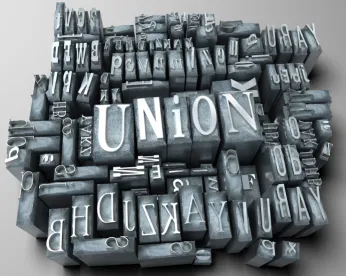The Wisconsin Court of Appeals recently upheld Wisconsin’s right-to-work law in its September 2017 decision in International Assoc. of Machinists District 10 and its Local Lodge 1061 v. State of Wisconsin, 2017 WI App 66. The decision is seen by some as a victory for Wisconsin workers, while others consider it a defeat for labor unions and worker rights. Either way, the decision is part of a national trend of state and federal courts upholding similar laws, including the Seventh Circuit Court of Appeals’ July decision upholding the same Wisconsin law. The losing labor unions have not sought review by the Wisconsin Supreme Court so Wisconsin’s right-to-work law is here to stay.
Labor unions provide representation for employees during collective bargaining, contract administration, grievance adjustment, and other employment related issues. Unions historically negotiated for clauses in collective bargaining agreements that required all employees, including union member and non-members alike, to pay their “fair share” for union representation as a condition of employment—normally referred to as “union shop” clauses. 2015 Wisconsin Act 1, among other things, prohibited provisions in labor agreements that require employees pay union dues as a condition of employment.
Two Wisconsin labor unions, International Association of Machinists District 10 and its Local Lodge 1061 and United Steelworkers District 2, and the Wisconsin chapter of the AFL-CIO labor federation (the Unions), sued the State of Wisconsin, Governor Walker, and other high-level officials and challenged the right-to-work law as unconstitutional. The Unions argued that the ban on compulsory union dues constituted an unlawful government taking in violation of the Wisconsin Constitution. A Dane County Circuit Court judge agreed.
The State defendants appealed and won. The court of appeals reversed the circuit court’s decision finding that the Unions did not prove beyond a reasonable doubt that the Act’s right-to-work provision was unconstitutional.
The Unions argued that the right-to-work law was facially unconstitutional, i.e., that as written the law is unconstitutional in every application, not just how it directly affected them. The court, however, interpreted the Unions’ specific allegations and supporting evidence as a hybrid challenge attacking the Act as facially unconstitutional but also as-applied to them. This interpretation allowed the court of appeals to assess only the as-applied challenge and, if the Act was not unconstitutional as-applied, to forego making a determination as to the facial challenge. This is exactly what occurred; the court denied the Unions’ as-applied challenge, which ended the inquiry.
The Union’s as-applied challenge was that the Act, in conjunction with the duty to provide fair representation, constituted a government taking without just compensation. An unconstitutional taking occurs when the government takes private citizens’ property for public use without providing just compensation. The Unions argued, that the Act takes the Unions’ money because it compels them to use their own funds to provide services for non-members’ fees or dues while not requiring those non-members to reimburse the Unions for those expenses. The court, relying on a concurring opinion from a past United State Supreme Court decision, concluded that the right-to-work law does not constitute an unconstitutional taking. The Act simply imposes on labor unions an obligation to act—prohibiting them from collecting dues from non-members—but is silent as to how labor unions must comply. Importantly, the Act does not force labor unions to use their own funds to make up any difference. Preventing a union from collecting dues from an employee is not a government taking just because the union may use its own money to make up the difference.
The court also denied the Unions’ argument that Act 1’s compulsory dues-ban was a regulatory taking under the United State Supreme Court’s decision in Penn Central Transportation Co. v. City of New York, 438 U.S. 104 (1978). A regulatory taking occurs when a government regulation on property goes too far in interfering with a property owner’s rights at the expense of the government. Courts use a multifactorial test to determine if such a taking is unconstitutional, including assessing the regulations’ effect on the property owner, the extent to which the regulation interferes with property or investment expectations, and the government action at issue.
The court disagreed with each of the Unions many arguments. Most notably, in response to the Unions’ claim that the Act severely impacts them financially, the court concluded that the Unions failed to show that they would not have suffered the same impact but for Act 1. The duty to provide fair representation to employees existed before Act 1, so the potential for the financial impact of paying for union services preexisted the Act’s ban on compulsory dues. The Act, essentially, did not impose a new monetary obligation on labor unions and therefore did not create a regulatory taking.
The Unions also compared Act 1 to when the legislature sets unreasonably low rates for public utilities, which courts have found to be an unlawful taking against public utilities. The court found the analogy misguided. It concluded that, unlike public utilities, labor unions have the right to raise money to pay for their services through other means. The Unions’ inability to collect dues from non-members does not prevent them from obtaining cash flow from other sources or increasing the rates they charge paying union members. Labor unions have other means to remedy any monetary affect the ban may have on their ability to collect dues to pay for union services.



 />i
/>i

